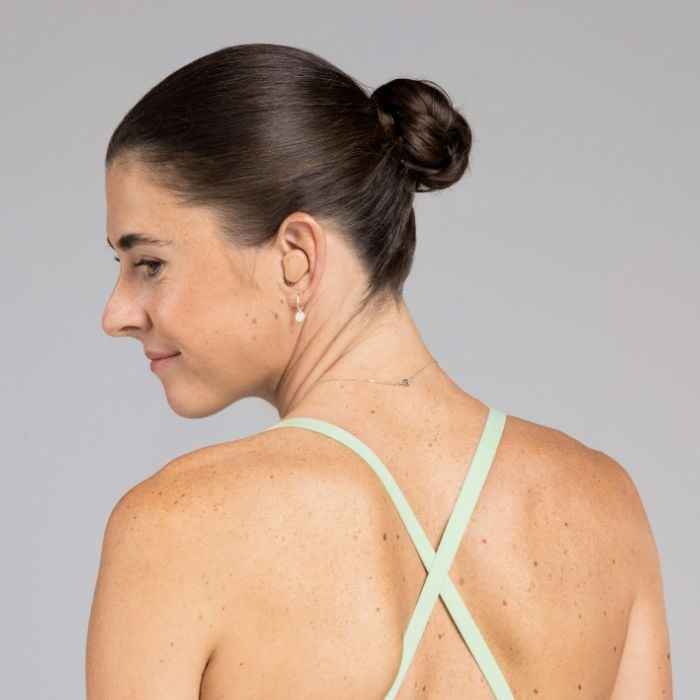Key Takeaways:
- The fitting appointment ensures your technology works appropriately and that you have everything you need for the first few days/weeks until your follow-up.
- Your first hearing aid fitting appointment can seem like a lot. Don’t be afraid to ask questions.
- Let your clinician know if anything sounds or feels uncomfortable. It’s easier to fix it right there in your appointment.
- Questions will likely come up after you leave the office, it’s normal (and expected). You’ll want the best contact info (phone or email) if you need to reach out before your follow-up appointment.

Navigating the world of hearing aids can be a bit like preparing for a tailor-made suit – it's a personalized process, and the better the fit, the more you'll enjoy the experience. Whether you're on the brink of your first hearing aid fitting or simply looking to optimize your current solution, understanding the process is pivotal. In this comprehensive guide, we'll walk through every step, from what to expect at your hearing aid fitting appointment to tips for making the most of your new device. It's time to demystify one of the most important chapters in your hearing health story.
The Heart of the Fitting Process: You and Your Needs
While there are numerous technical components to be adjusted and fine-tuned, the most pivotal element in this process is you. Yes, adopting a hearing aid will necessitate an adjustment period, but it's essential to recognize that you are at the forefront of this journey. Essentially, a hearing aid fitting aims to achieve two primary goals:
- An Appropriate Fit: This is the technical side of the process, where the audiologist ensures that the physical fit of the hearing aid is comfortable and suited to your unique ear shape. Additionally, the volume will be adjusted to both amplify speech correctly for your specific hearing loss and to still remain comfortable for daily use.
- Acquainting Yourself with the Technology: Beyond the fit, you'll want to become familiar with your new hearing aid. This part of the process is a sort of tutorial, covering everything from how to insert and remove the devices, to charging them, and even setting up Bluetooth functionality (for those that want it).
An Audiologist's Insight
As an audiologist, I can attest to how a hearing aid fitting is far more than just setting the volume. It's a collaborative effort that balances your individual hearing profile, lifestyle, and comfort with technology. Think of it as a team effort, and don't be afraid to ask questions throughout the process.
Throughout this process, the aim is to blend technical precision with personal comfort and usability. By focusing on these goals, your transition to using hearing aids will run as smoothly as possible, allowing you to reconnect with the sounds of the world around you.
Now let's delve a little further into each of these.
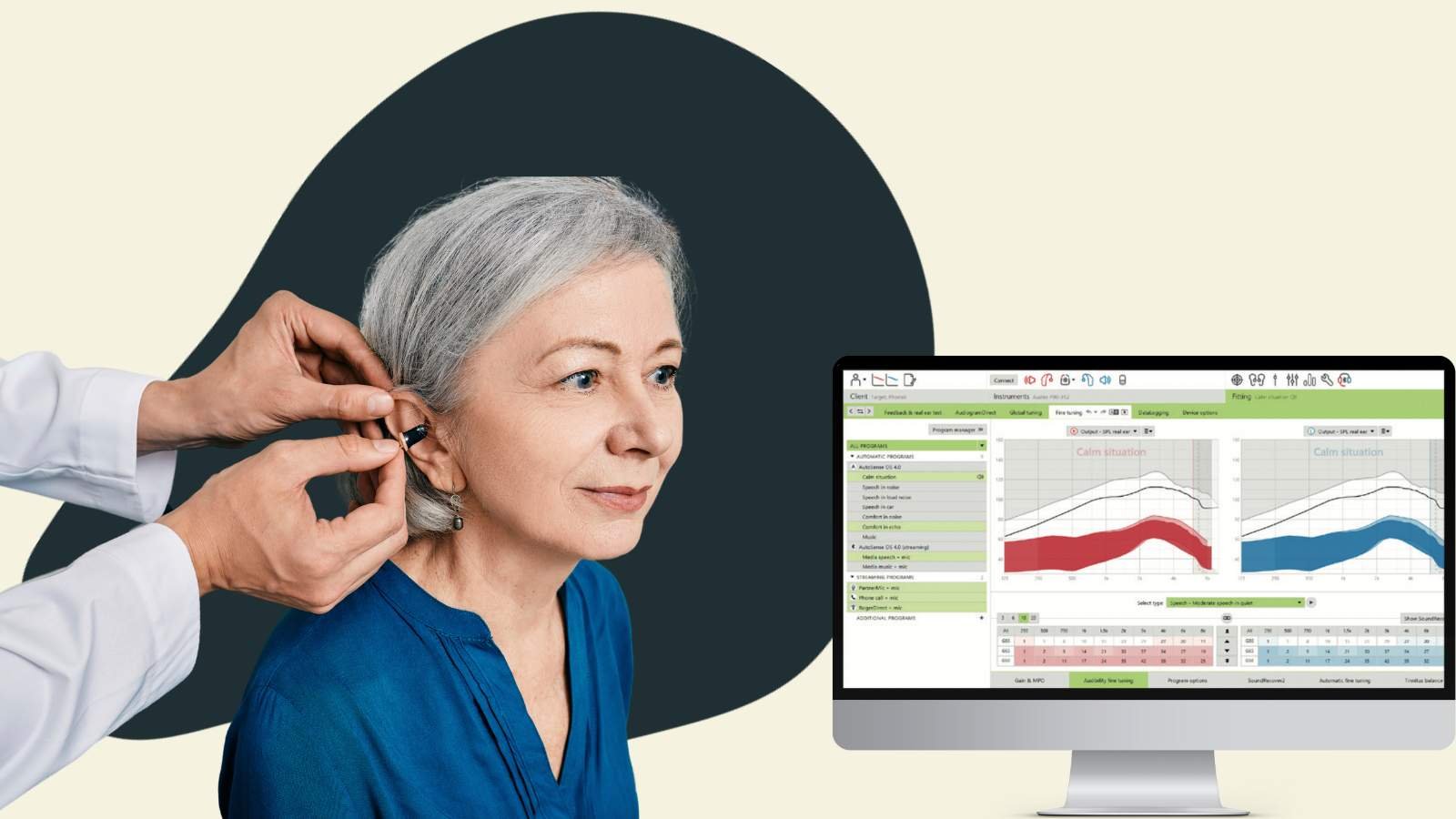
The Right Fit
- Programming your hearing aids
- Ensuring proper physical fit
- Verifying the correct settings
During your hearing aid fitting, you might be curious about the specific tests and adjustments the audiologist is conducting. It's worth noting that each audiologist may have a slightly different approach, but a common practice involves first programming the hearing aids to match your hearing prescription using software (a "first fit"). Hearing aids connect to the software via Bluetooth connection, and then your clinician will program and set your hearing aids for your hearing loss.
Your Appointment Day: A Fitting Session Breakdown
Your fitting appointment will typically last about an hour, but it packs a lot into that time. It's best to arrive with a list of questions and a trusted family member or friend for support. (It helps to have a second set of ears!)
Review the Audiogram (Typically Gathered in a First Appointment)
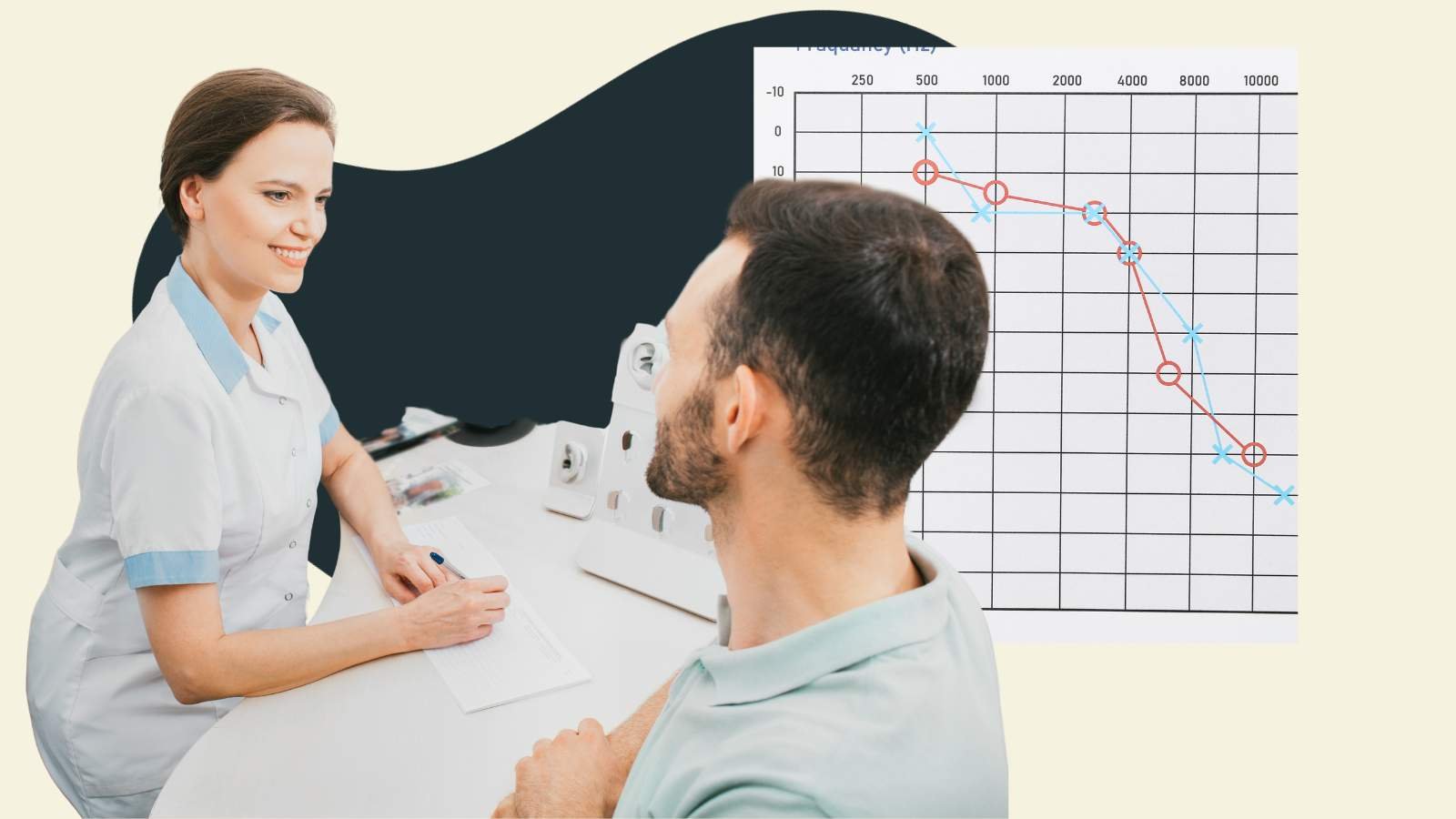
At the beginning of your fitting session, it's usually helpful to review the audiogram, since this chart is at the heart of tailoring the hearing solution to your needs. Your audiologist will take the time to point out any unique aspects or helpful insights about your hearing situation. For instance, if your audiogram reveals high frequency hearing loss but indicates good speech understanding, the primary goal will be to amplify sounds in the high frequencies to make speech clearer and more discernible for you. Understanding your audiogram and how it reflects your hearing capabilities is crucial for setting up your hearing aids to improve your quality of life effectively.
Note: while the hearing aid fitting is usually on a separate day, in some cases you'll have a hearing test and fitting on the same day.
Physical Fit and Comfort
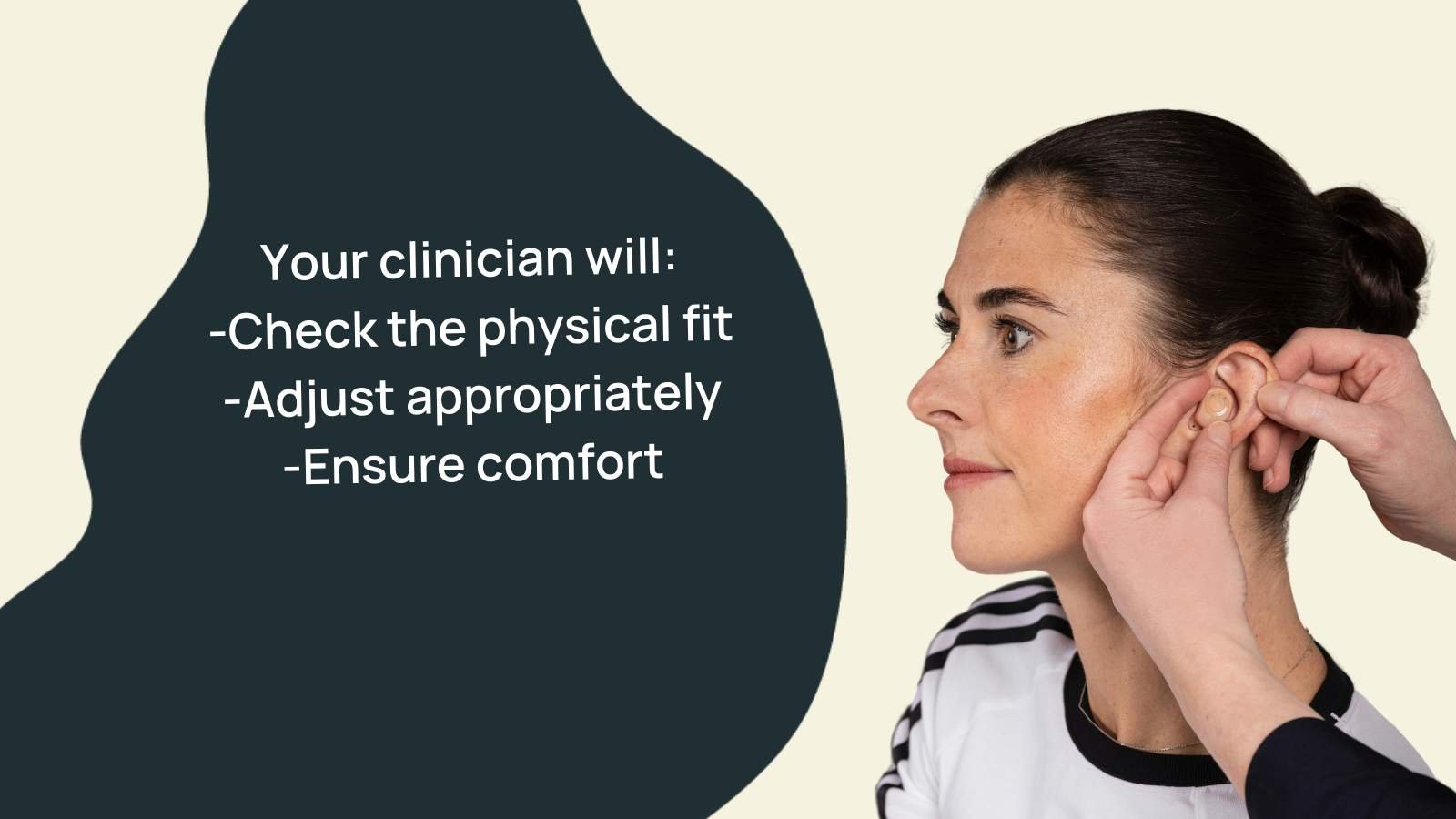
The first step in your fitting appointment is to fit your devices comfortably on your ear. Just like finding the right shoe size, your hearing aids need the right fit to your ear. Depending on your device, this may involve adjusting the wire length, dome tips, or modifying earmolds. Your input here is super important too! It takes time to get used to wearing hearing aids, but if anything feels uncomfortable let your hearing healthcare professional know.
Sound Quality Adjustments: the Technical Items
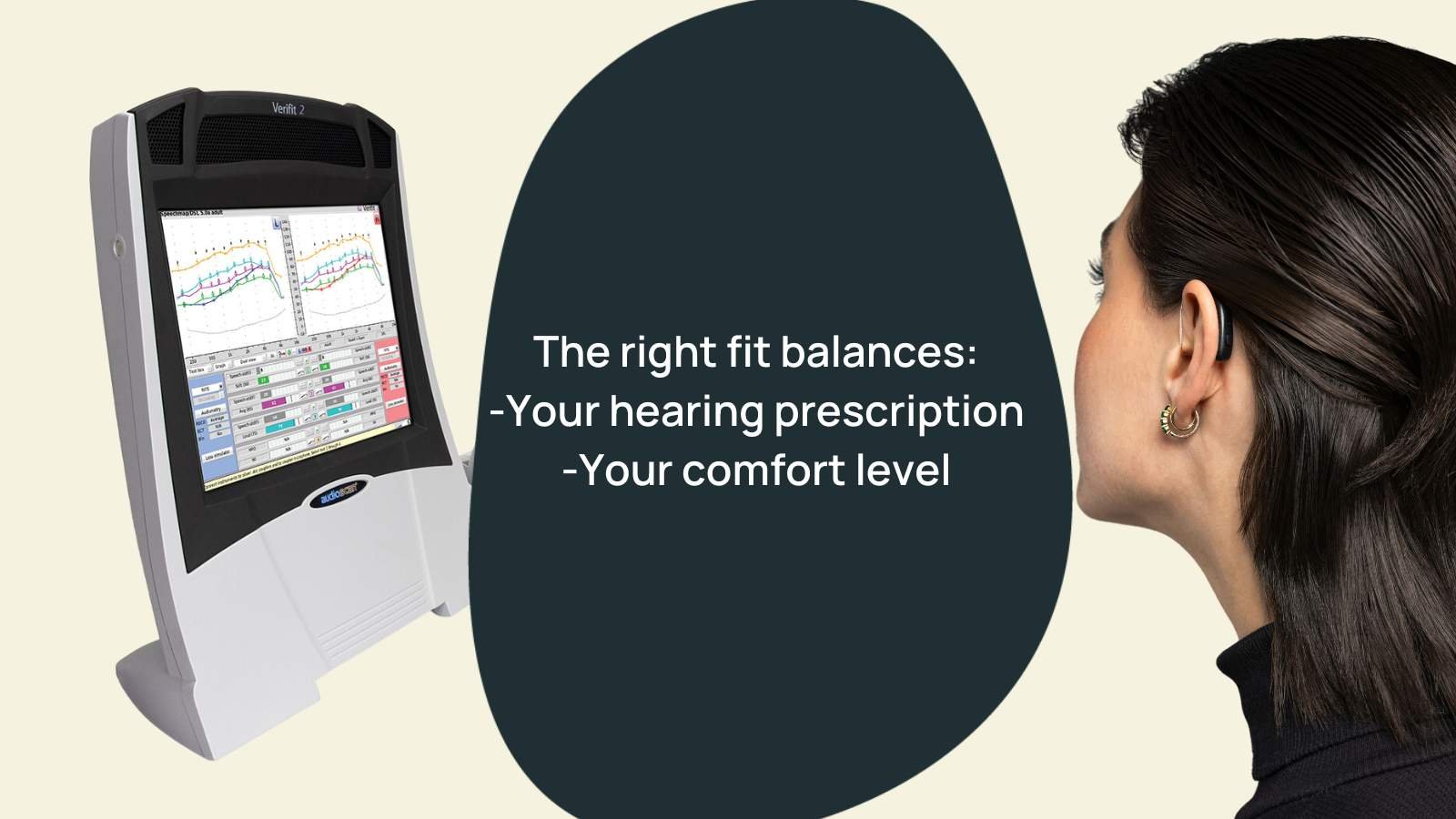
Next, your audiologist will adjust the volume and frequencies of your hearing aids. During your hearing aid fitting, you might be curious about the specific tests and adjustments the audiologist is conducting. Here are a few common steps to know
First Fit
It's worth noting that each audiologist may have a slightly different approach, but a common practice involves first programming the hearing aids to match your hearing prescription using software (a "first fit"). Here’s how it works:
- Hearing aids connect to the software via Bluetooth connection, and then your clinician will program and set your hearing aids for your hearing loss.
- You’ll hear how things sound and probably notice that your own voice sounds different.
- Your clinician will give you a few minutes to listen to the way it sounds and may demonstrate a few sounds as well (e.g., others talking, papers rustling, clapping, etc.).
- In some cases, there may also be a "feedback test" that involves sitting quietly while listening to some beeps in each ear. (This helps to reduce any unwanted squealing from your devices while in your ears.)
- Is the volume too much or not enough? Your clinician will make fine-tuning adjustments based on your comfort level.
Verification
Some audiologists might utilize specific equipment during the initial fitting to ensure that the hearing aids meet your prescriptive targets accurately. However, it's not unusual for others to prefer doing these verifications during a follow-up appointment instead. This is primarily because the initial full prescription settings can sometimes feel overwhelmingly loud to new users.
Here is how it generally works:
- First, your clinician will look in the ears to ensure a clear view of the eardrum.
- A small probe tube is placed in the ear canal near the eardrum. (This part might tickle a bit as it goes in.)
- The hearing aid is placed in the ear (with the probe tube in the ear canal).
- Next, you’ll listen to some speech (e.g., the ‘carrot passage’ or other speech sample).
- As you listen with the hearing aids on, your clinician will make adjustments to ensure the volume is appropriate for your hearing loss at each frequency.
Once again, remember that you are in the driver's seat here. Achieving exact prescriptive targets on the first go is less crucial than ensuring you benefit from and are comfortable with your new hearing aids. The end goal is to enhance your hearing experience in a way that feels natural and comfortable to you, even if this means adjusting the initial settings over time to better suit your needs and preferences.
Orientation
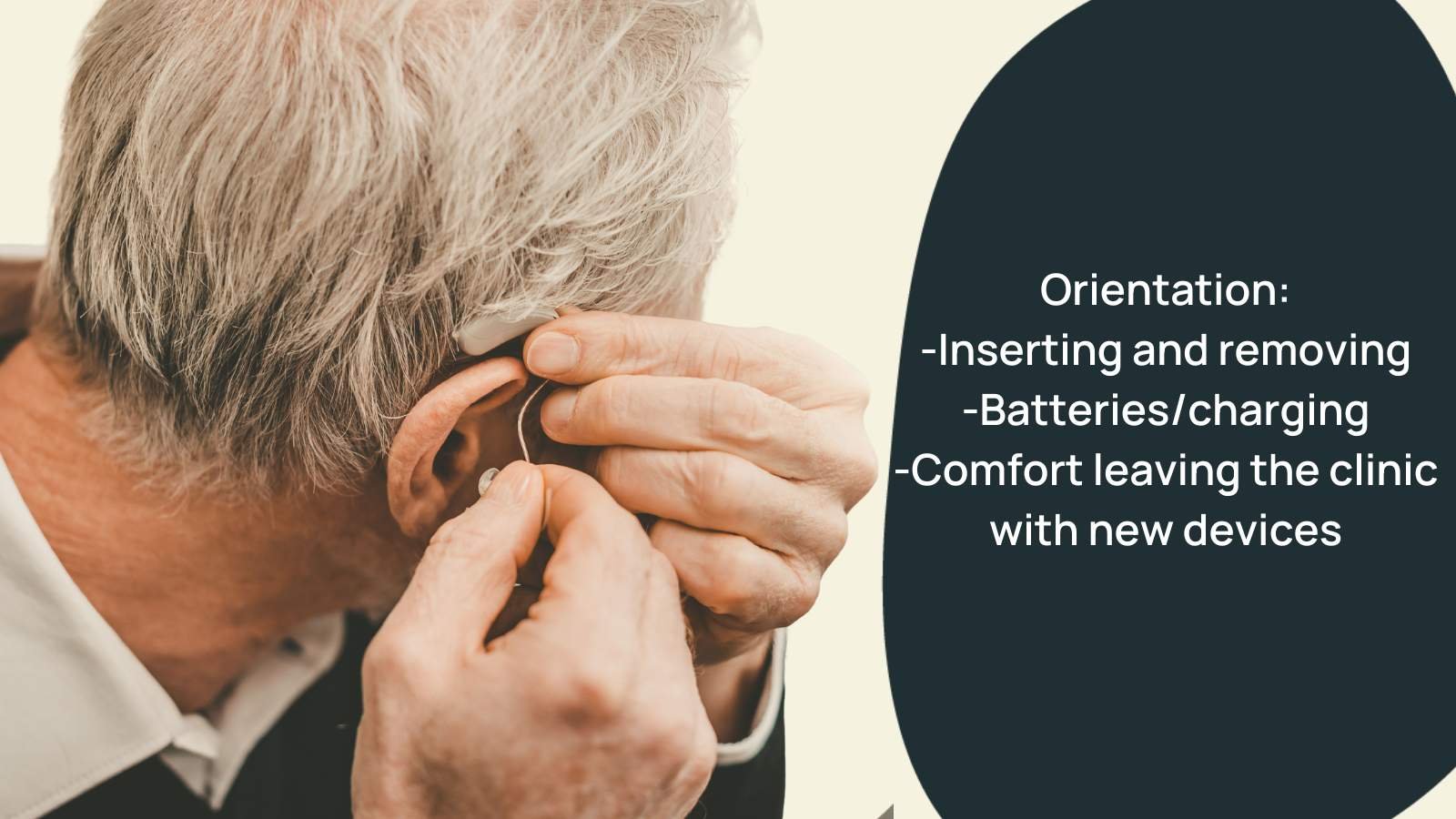
Once your hearing aids are comfortably settled in your ears and adjusted to your preference, it's time for the important stuff: what you'll need to know after walking out of the clinic. Think of it as a crash course in the "care and feeding" of your hearing aids. Understanding how to properly care for and maintain your hearing aids is as crucial as the fitting process itself. In the first week or two after your fitting, you'll be adjusting not just to how things sound, but also to the new routine of wearing your devices. Here are key points to keep in mind:
- Inserting and removing: this one is pretty important. You'll want to practice this in the office so you feel comfortable doing it at home. You'll go through any questions like "which part do I put on first, the dome tip or the device behind the ear?"
- Cleaning: Every day, take a moment to wipe down your hearing aids with a clean, dry cloth. This helps remove earwax, moisture, and debris, ensuring optimal performance and longevity.
- Battery Management: Whether you're using disposable batteries or rechargeable ones, you'll need to know how long they last and how to properly replace or charge them. For rechargeable, your hearing devices go into a 'sleep mode' when you charge them, so no need to worry about turning them on and off.
- Getting Support: If you have questions or need help, it's good to know the best way to reach out. Does your office have walk-in or drop-off hours? Can you call or email with questions? Your care team will go through these important answers. When in doubt, it always helps to "phone a friend" to put your mind at ease.
Now the Fun Part - Bluetooth

Bluetooth connectivity in hearing aids is an exciting feature that opens up a world of possibilities, from streaming phone calls directly to your devices to enjoying music or watching TV with ease. However, this part is optional, as not everyone wants to set up Bluetooth right away. Some patients prefer to focus solely on the fitting and orientation, opting to think about Bluetooth and other additional features another day, which is totally reasonable. After all, adjusting to your new hearing aids is a lot to take in.
On the other hand, some patients are eager to explore all the capabilities of their new devices and are especially excited about using the new app to adjust their devices and stream music or phone calls. The choice is entirely yours. Your hearing care professional isn’t bothered by this part. In fact, some app tools on your phone can even give clinicians more insight into what you prefer and need. So if you're keen to get started with Bluetooth and phone call connectivity, your clinician is ready to assist. They can help you with the setup and ensure you're comfortable using these features. Remember, the goal is to make your transition to using hearing aids as smooth and enjoyable as possible, whether you choose to explore Bluetooth options now or later.
Final Thoughts
It's been quite the journey, hasn't it? Stepping into the world of hearing aids might have felt a bit overwhelming at first, but just like any new adventure, it becomes more familiar and comfortable with time. Think of your hearing aids as new companions on this journey. Sure, there might be a bit of a learning curve as you get to know each other, but soon, you'll wonder how you ever got along without them. Just like any good friendship, communication is key. Don't hesitate to reach out to your audiologist if things aren't feeling quite right. They're there to help you make this transition as smooth as possible.
And remember, adjusting to hearing aids is a personal journey. There's no one-size-fits-all approach. Whether you're all in from day one, eager to explore every feature, or you prefer to take it slowly, both paths are perfectly okay. The most important thing is that you're moving forward, at your own pace, towards better hearing and a richer life experience.
Here's to new sounds, new experiences - welcome to your new hearing adventure.



